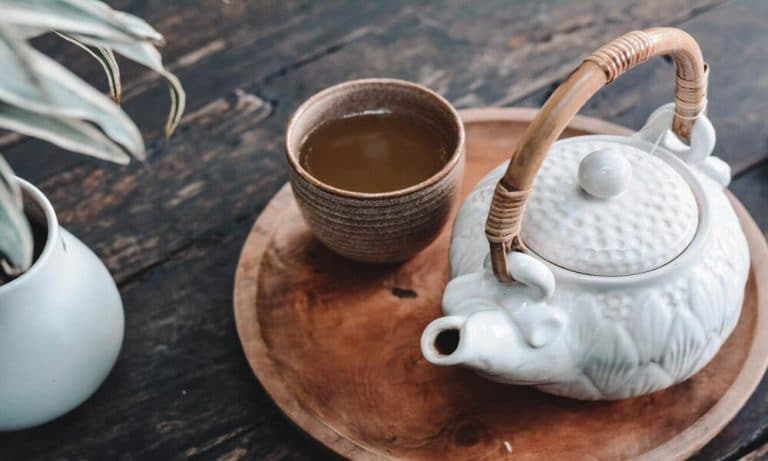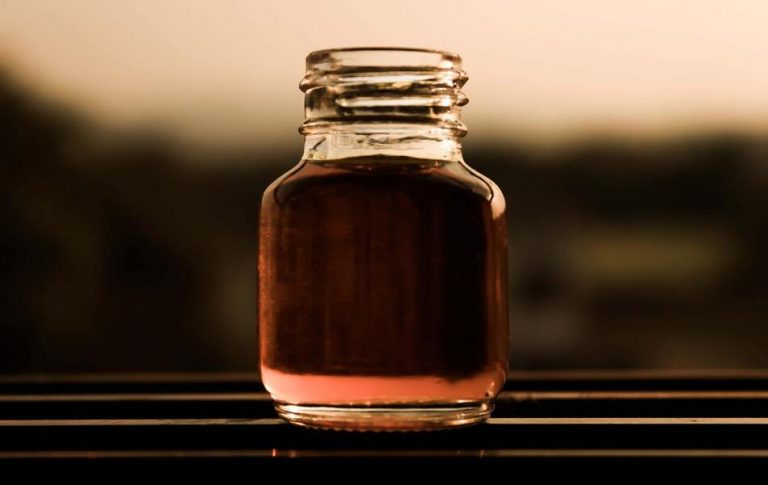How to Get Rid of Chest Acne in 2024 (Expert Guide)

Chest acne is a skin problem that happens when the chest hair follicles get blocked with dead skin cells and oil. Your skin develops pimples or bumps called whiteheads or blackheads when this happens.
Generally, acne appears more frequently on the forehead, face, chest, shoulders, and upper back because these areas have the most oil. Figuring up how to get rid of chest acne will depend on its triggers, so the first step is identifying them.
Types of Chest Acne
Six types of acne can appear on the chest. Most people with chest acne experience several types simultaneously. These include:
- Whiteheads: These are closed plugged follicles under the surface of the skin.
- Blackheads: They are open plugged follicles on the surface of the skin.
- Cysts: These are painful pus-containing lumps below the skin.
- Nodules: These are large, solid, painful lumps below the skin.
- Papules: These are small, red, tender bumps.
- Pustules: They are papules with pus tips.
What Causes Chest Acne?
Based on extensive research, we’ve identified more than ten common causes of chest acne. While most are linked to your lifestyle, some touch on other areas.
Genetics
The genetic factor in acne is significant and recorded in studies in the US and Australia. If there are people in your family who have or have had acne, chances are you might also develop it at some point. Our skins vary in the amount of oil they secrete and the type of pores they have. Oily skin is known to increase the risk of acne. People with more melanin are also more likely to get acne.
Medication
Although most chest acne cases aren’t related to drugs, certain medications can trigger it. If you take medications that contain bromides or iodides—such as cough medicines and sedatives—you may develop chest acne.
Other medicines that have been identified as potential triggers include but aren’t limited to barbiturates, lithium, corticosteroids, DHEA, anticonvulsants, and androgenic steroids. However, some of these drugs cause skin conditions that only resemble acne but aren’t acne. It usually takes several weeks of continually using such medication to develop chest acne. Generally, drugs that have hormone-level effects are among the common chest acne causes.
Hormone Changes
Hormonal acne occurs when the body secretes too much sebum, which is an oil that lubricates the skin. The sebum mixes with dead skin cells and clogs the hair follicles. Acne caused by hormonal changes is more likely to appear on the face but can also show up on the chest.
If you’re a teenager, your chest acne is likely brought on by changes in hormone secretion. While 80% of people aged 11–30 have acne, it’s more common in the 14–19 age range. It’s the high production of testosterone in boys that stimulates the sebaceous glands to produce more sebum than the skin needs, leading to an excess of oil on the skin.
Certain Body Changes
Women are more prone to adult acne than men. This is because acne can occur due to certain changes in a woman’s body, such as menstrual cycles, pregnancy, and polycystic ovary syndrome.
Dehydration
When you don’t consume enough water, acne is likely to develop. Although such acne mostly shows up on the forehead and around the ears, it can also develop on the chest when dead cells accumulate. Water cleanses the body from toxins, keeps the skin moist to maintain healthy cells, and helps unclog hair follicles.
Sweat
Pimples on the chest can come from sweat. You’re likely to sweat excessively during workouts or when you engage in any intense physical activity. Hot weather and exposure to sunlight can also lead to excessive sweating. Even some foods, medicines, or supplements like fat-burners can all cause your body to produce excessive sweat.
Sweat is basically water containing chemicals like urea, ammonia, etc. The skin is naturally covered with bacteria and contains oil. The sweat mixes with dirt, bacteria, oil, and dead skin cells, helping them to get into the follicles and clog them.
Stress
There’s a misconception that stress causes acne—it doesn’t. But it can make it worse. Stress is found to make the condition persists even if you’re treating acne or actively avoiding its causes. It would be good to manage your stress during the treatment, as it directly affects whether or how quickly the acne is likely to go away.
Others
Additional causes of chest acne include:
- tight-fitting clothing
- air pollution
- picking at acne sores
- foods that are high in sugar
How to Treat Chest Acne
Fortunately, there are many DIY options to choose from when dealing with acne. We’ll discuss a number of proven remedies for bumps on the chest. Dealing with acne starts with figuring out its cause. The first thing to check on is your lifestyle. For instance, find out if one of your hair or skin products is the culprit. Other things to look into include your diet, genetics, etc.
Shower
If you don’t hit the shower daily, acne will likely pop up on your chest and other areas. Regular showers remove much or all the elements on your skin responsible for acne. These include bacteria, dirt, oil, and dead skin cells.
Dead cells accumulate even during colder and drier months, which means you should bathe regularly throughout the year. Lukewarm water is recommended for keeping your skin free from acne, but note that rinsing with cold water after your bath helps close the pores (hair follicles).
Body Wash
Getting rid of chest acne with specialized skin products is quick and easy. Body wash products contain ingredients like salicylic acid, which dries out acne. The best acne body washes will also remove built-up oil and unclog pores.
Don’t rinse the body wash immediately after applying it. Rather, allow enough contact time with your skin to benefit from its full potential. While some people prefer the more natural methods, like using high-quality green tea extract or something similar, the effectiveness of these solutions has not been proven.
Exfoliate
Exfoliation is the process of getting rid of dead cells on the outermost layer of your skin. We’ve seen above how dead skin cells contribute to acne by clogging the hair follicles. Exfoliating correctly—and at the right time—reduces the chances of acne by keeping dead skin cells away from your hair follicles.
Exfoliation can be done manually by scrubbing your skin gently at most once or twice a week. Although exfoliating happens automatically every 28 days in young people, it can take longer in older individuals (e.g., after two or three months). That makes the dead skin cells stay around longer, increasing the chances of your chest breaking out in acne.
If an exfoliant feels too rough against the skin, you can get a softer one or use a chemical exfoliator. These exfoliators use acid to dissolve dirt and oil, making it easier for dead cells to fall off.
Body Lotion
There are different types of body lotion, each formulated for specific results. Some lotions are made to fight acne and are designed for sensitive skin that can’t tolerate other body wash products. Some of these lotions contain exfoliants like salicylic acid. These lotions typically don’t contain undesirable ingredients and are non-comedogenic.
Spot Treatments
If you’re interested in learning how to get rid of chest acne quickly, you should look into spot treatments. Spot treatments are meant to work quickly without harming your skin. The most common ingredients used in spot treatment lotions are benzoyl peroxide and salicylic acid. The former fights the bacteria that causes zits, while the latter penetrates the hair follicles and dissolves the intercellular glue, unclogging the pores.
Laundry Detergent
Most commercial laundry detergents contain ingredients that trigger acne, such as sodium lauryl sulfate. Other detergents may have pore-clogging oil, which your skin might absorb. You can prevent this by choosing detergents that don’t contain any acne-causing ingredients.
Breathable Fabrics
We already mentioned that tight-fitting clothing might cause an acne breakout on the chest by rubbing dirt, oil, bacteria, and dead cells into the hair follicles. You can prevent this by opting for natural and breathable fabrics like cotton and avoiding nylon and wool, which are likely to cause acne. Likewise, loose-fitting clothes will prevent dirt and oil from getting trapped against your skin. A good way to prevent acne is to wear sweat-wicking fabrics when exercising and change your clothes as soon as you’re done.
Water
Water can help treat acne directly or indirectly. It’s particularly helpful against bacterial acne because water helps cleanse the body of bacteria and toxins, minimizing the chances of clogged pores. Likewise, well-hydrated skin maintains moisture, which protects the skin cells, thus reducing the number of dead skin cells. Finally, staying hydrated maintains blood sugar levels, and it’s been proven that high blood sugar increases the chances of acne.
Maintain Good Hygiene
This mostly applies to people who work out or engage in sweat-inducing activities. A good chest acne treatment for these individuals involves maintaining proper hygiene before, during, and after engaging in any intense physical activity.
Workout, exercising, and physical activity are undoubtedly good for our health. But these rigorous activities produce waste material that needs to be washed off the body; otherwise, they can cause many health problems, including acne. That said, treating your chest acne may only require simple hygiene improvements.
Don’t wear the clothes you’ve been sweating in for too long, and always clean your body of old sweat before engaging in another activity. Wherever possible, avoid situations that make you sweat a lot, especially when you don’t have the opportunity to wash up immediately. Using oil-free sunscreens will help too.
Advanced Treatments
There are other treatments for serious cases of acne. Some are taken orally, while others are for external use only. You should only use these medications on a prescription basis.
They include:
- antibiotics
- contraceptives
- isotretinoin
- retinoids
- dapsone
- steroids
- lasers
- chemical peels
When to See a Specialist
Although there are many DIY remedies and prescription treatments for acne on the chest, sometimes, acne can be persistent. Healing may happen too slowly, or new pimples and bumps may appear as others go away. When this happens, it’s time to talk to your primary care doctor. The doctor will prescribe a stronger medication, and if the medication doesn’t solve the problem, they might refer you to a dermatologist.
Conclusion
While there are probably more causes of chest acne than covered here, we’ve touched on almost all of the known ones, along with discussing how to treat different types of acne. Finding the reason you’re breaking out is the first step in figuring out how to get rid of chest acne. You might have to look for one or more triggers that might require more than one remedial approach.






